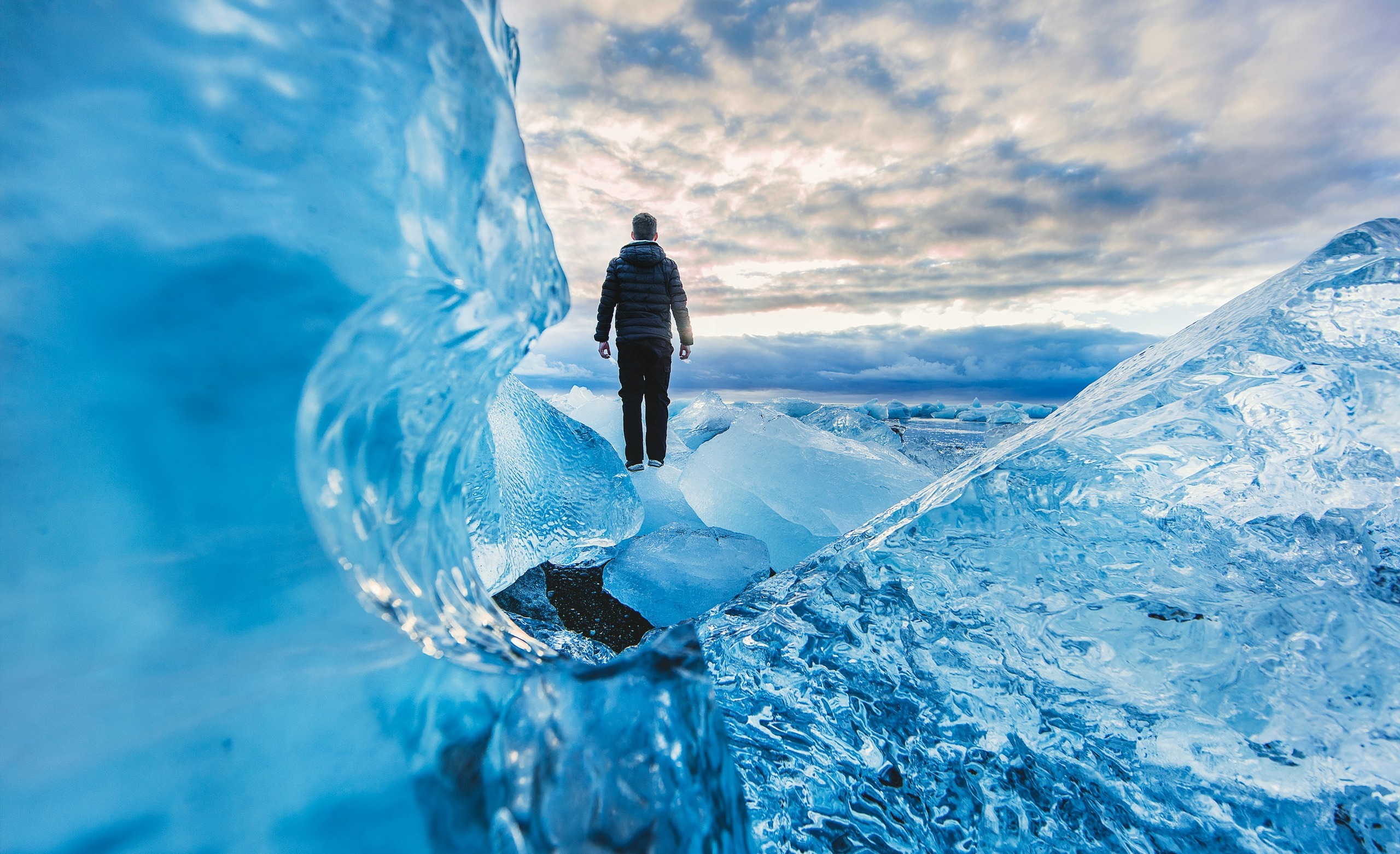
How To Survive An Ice Age
Today, we are going to focus our attention on how to survive an ice age. Welcome, brave readers, to a chilling exploration of survival strategies in the icy grip of an Ice Age. Imagine a world blanketed in snow and ice, where frigid temperatures reign supreme and only the most resilient can endure.
In this guide, we will delve into the art of surviving against all odds during one of Earth’s most extreme challenges. So grab your parka and thermos, because it’s time to learn how to thrive when Mother Nature turns frosty!
Understanding the Causes of an Ice Age
Have you ever wondered what triggers an Ice Age, plunging our planet into a frozen realm of snow and ice? Scientists believe that these dramatic shifts in climate are influenced by a combination of factors, including variations in Earth’s orbit around the sun, changes in ocean currents, and fluctuations in atmospheric carbon dioxide levels.
During an Ice Age, the tilt of Earth’s axis becomes more pronounced, leading to cooler summers and colder winters. This causes ice sheets to grow and spread across continents, shaping the landscape we know today. Additionally, natural events like volcanic eruptions can contribute to cooling effects by releasing ash and particles into the atmosphere.
As these complex mechanisms interact with one another over thousands of years, they create a delicate balance that ultimately determines whether our planet will be gripped by icy conditions or experience warmer periods. Understanding these intricate processes can help us appreciate the power of nature and prepare for potential challenges that may lie ahead.
Preparing for an Ice Age: Essential Supplies and Skills
As we face the potential challenges of an Ice Age, preparation is key to survival. Stocking up on essential supplies like non-perishable food, water purification tablets, and warm clothing is crucial. Make sure to have a reliable source of heat, such as a portable heater or fire-starting tools.
Developing skills like hunting, fishing, and foraging can help you sustain yourself when resources are scarce. Learning basic first aid and navigation techniques will also be invaluable during this uncertain time.
Invest in sturdy shelter options like insulated tents or underground bunkers to shield yourself from the harsh elements. Building a community with trusted individuals who share your goal of survival can provide support and resources.
Stay informed about weather patterns and adapt quickly to changing conditions. Remember, being proactive now can make all the difference in how well you fare in an Ice Age scenario.
Finding Shelter in an Ice Age
When facing the harsh conditions of an Ice Age, finding suitable shelter is crucial for survival. Building a sturdy and insulated shelter can protect you from freezing temperatures and biting winds. Look for natural formations like caves or overhangs that can provide immediate protection from the elements.
If natural shelters are not available, constructing your own using materials like snow blocks, ice, or even branches can offer some refuge. Be sure to insulate the interior with additional layers to retain heat effectively.
Consider building your shelter close to potential food and water sources but also far enough away from dangerous wildlife habitats. This balance is key in ensuring both safety and access to essential resources.
Adapting quickly and creatively to your environment when seeking shelter will greatly increase your chances of surviving an Ice Age scenario.
Surviving Extreme Cold Weather
When facing extreme cold weather during an ice age, staying warm is crucial for survival. Dress in layers to trap heat close to your body and prevent frostbite. Insulated clothing, hats, gloves, and waterproof boots are essential.
Build a shelter using materials like snow blocks or branches covered with snow to create insulation against the cold. Avoid sleeping directly on the ground as it will draw heat from your body.
If you find yourself caught in a blizzard, seek refuge immediately. Use landmarks or natural formations for navigation when visibility is low. Keep moving to maintain body warmth but avoid sweating which can lead to hypothermia once you stop.
Stay hydrated by melting snow for water but never eat snow directly as it can lower your core temperature. Additionally, carry high-energy snacks like nuts or dried fruits to keep up your energy levels in the harsh conditions.
Finding Food and Water During an Ice Age
In the harsh conditions of an Ice Age, finding food and water becomes a critical aspect of survival. With frozen landscapes and scarce resources, it’s essential to be resourceful in your search for sustenance.
Hunting and fishing can provide valuable sources of protein during an Ice Age. Learning how to set traps or fish through ice holes can increase your chances of securing a meal. Additionally, foraging for edible plants like lichens or moss can supplement your diet with vital nutrients.
Water sources may be limited during an Ice Age due to freezing temperatures. It’s crucial to melt snow or ice for drinking water but ensure it is purified before consumption to avoid contamination. Carrying portable water filtration systems can also help you stay hydrated safely.
Adapting to the challenges of obtaining food and water in an Ice Age requires creativity and resilience. By honing your survival skills and knowledge of edible resources, you enhance your chances of enduring these extreme conditions.
Staying Safe from Dangerous Wildlife
When facing an ice age, the threat of dangerous wildlife adds another layer of challenge to survival. Knowing how to stay safe from these creatures is crucial for your well-being. First and foremost, it’s essential to understand the behavior and habitats of the wildlife in your area.
Research which animals are native to the region you’re in and learn how to avoid encounters with them. Maintain a clean campsite by properly storing food and waste away from where you sleep. This will help deter curious or hungry animals from approaching your living space.
If you do encounter wildlife, remain calm and try not to startle them. Slowly back away while making yourself appear larger by raising your arms or spreading out a jacket. Carrying noise-making devices like whistles or bells can also be helpful in alerting animals to your presence before you get too close.
Remember, respecting their territory is key in staying safe during an ice age survival scenario.
Maintaining Mental and Emotional Health During an Ice Age
When facing the harsh realities of an Ice Age, it’s crucial to prioritize your mental and emotional well-being. The extreme conditions can take a toll on your psyche, but staying resilient is key. Find ways to stay connected with others in your group or community.
Social support can provide comfort and strength during challenging times. Sharing experiences and emotions can help lighten the burden. Maintain a routine to give yourself structure and purpose each day. Even simple tasks like gathering firewood or preparing food can offer a sense of accomplishment.
Take breaks when needed to rest and recharge. Engage in activities that bring you joy, whether it’s storytelling around the campfire or enjoying nature’s beauty. Practice mindfulness techniques to stay grounded in the present moment.
Focus on what you can control and let go of worries about the future. Remember, it’s okay to feel scared or overwhelmed at times. Acknowledge your emotions without judgment and seek solace in knowing that you’re not alone in this journey through the Ice Age wilderness.
Tips for Survival After an Ice Age
After an Ice Age, the world as we know it will look drastically different. As you navigate through the aftermath of the extreme cold, it’s crucial to remember a few key tips for survival. Utilize any resources that may have been preserved during the Ice Age.
This could include food supplies stored underground or materials buried under snow and ice. Adapt to the new climate conditions. The landscape may have changed significantly, so be prepared to explore and find new sources of shelter and sustenance.
Additionally, connect with other survivors if possible. Collaborating with others can increase your chances of survival by sharing skills and resources. Remain resilient and resourceful in this challenging post-Ice Age environment.
Adaptability is key to thriving in these harsh conditions where traditional ways of living may no longer apply.
Conclusion
In the face of an ice age, survival becomes a true test of human resilience and adaptability. By understanding the causes, preparing with essential supplies and skills, finding shelter, staying warm, sourcing food and water, avoiding dangerous wildlife, and prioritizing mental well-being during such harsh conditions – one can increase their chances of making it through.
Remember to stay calm, resourceful, and connected to your instincts. The ability to adapt quickly to changing circumstances will be paramount in navigating the challenges an ice age presents. Keep learning new survival techniques and honing your skills for future adversities.
As we look back at ancient civilizations that endured ice ages before us – let their stories inspire our own journey towards surviving these extreme environmental shifts. With perseverance and determination as our guides, we can overcome even the harshest conditions nature throws our way. Stay prepared, stay safe; may you weather any storm that comes your way.



